#japanese buddhism
Text

April 2023: Tokyo, Japan
Dancers perform during the Shirasagi-no Mai, or White Heron Dance, at the Sensoji Temple
Photograph: Tomohiro Ohsumi/Getty Images
293 notes
·
View notes
Text
Japanese Monkey God
User @red-lights-burning asked if there was a connection between Sun Wukong and the monkey gods of Japan. They provided lovely info, which was split between two asks, but I decided to put everything together into a single post.
@red-lights-burning asked:
Japan has their own monkey protector named Masaru AKA Sannō Gongen, who was created back in the early 9th century by Tendai Buddhist sect founder Saichō shortly after he returned from China. So it makes me think if Monkey King was already a thing in the 800’s and if he was one of the inspirations for Masaru.
A description from onmarkproductions (a really great site for anyone curious about Japanese Buddhism and Shintō)
MASARU 神猿
Literally “Kami Monkey.” Masaru is the sacred monkey and protector of the Hie Shrine (aka Hie Jinja 日吉神社, Hiyoshi Taisha 日吉大社). The term “Masura” is often translated as “excel,” reflecting the belief that this sacred monkey can overcome all obstacles and prevail against all evil. Masaru is thus considered a demon queller par excellence (魔が去る・何よりも勝る). In the Heian era, Masaru (also translated “Great Monkey”) was invoked in Kōshin rituals to stop the three worms from escaping the body. Masaru also appears in Japanese scrolls used in Koushin rites.
Here’s a couple other descriptions
SANNŌ GONGEN 山王 権現 SARUGAMI 猿神 Fertility, Childbirth & Marriage
Monkeys are patrons of harmonious marriage and safe childbirth at some of the 3,800 Hie Jinja shrines in Japan. These shrines are often dedicated to Sannō Gongen 山王権現 (lit. = mountain king avatar), who is a monkey. Sannō is the central deity of Japan’s Tendai Shinto-Buddhist multiplex on Mt. Hiei (Shiga Prefecture, near Kyoto). The monkey is Sannou’s Shinto messenger (tsukai 使い) and Buddhist avatar (gongen 権現).
The monkey messenger is also known as Sarugami (猿神; literally “monkey kami”). Sarugami is the Shinto deity to whom the three monkeys (hear, speak, see no evil) are reportedly faithful. The monkey shrine at Nakayama Shrine 中山神社 in Tsuyama City, Okayama Prefecture, is dedicated to a red monkey named Sarugami, who blesses couples with children. According to shrine legends, the local people at one time offered human sacrifices (using females) to this deity. The shrine is mentioned in the Konjaku Monogatari-shu (今昔物語集), a collection of over 1000 tales from India, China, and Japan written during the late Heian Period (794-1192 AD). Sarugami, like Sannou Gongen, is also worshipped as the deity of easy delivery and child rearing. At such shrines, statues of the monkey deity are often decked in red bibs -- a color closely associated with fertility, children, and protection against evil forces and diseases like smallpox.
My answer:
I've read only a little bit about Japanese monkey gods. I previously referenced Sarugami in my article about the possible shamanic origins of primate-based boxing in China. Part of footnote #14 reads:
In Japan, monkeys were also associated with horses and healing via the warding of evil. Apart from monkeys being kept in stables like their Chinese counterparts, their fur was applied to the harnesses and quivers of Samurai because the warriors believed it gave them more control over their mounts. Furthermore, monkey body parts have been consumed for centuries as curative medicines, and their hides have even been stuffed to make protective amulets (kukurizaru) to ward off illness. Likewise, a genre of painting depicts divine monkeys (saru gami), messengers of the mountain deity, performing Da Nuo-like dances to ensure a good rice harvest (Ohnuki-Tierney, 1987, pp. 43-50)
The aforementioned article suggests a connection between monkeys and the Shang-Zhou Da Nuo (大儺 / 難; Jp: Tsuina, 追儺) ritual, an ancient, war-like, shamanic animal dance designed to drive away demonic illness and influences. The pertinent section reads:
It’s possible that the “twelve animals” of the Da Nuo exorcism refer to some precursor of the Chinese zodiacal animals (rat, ox, tiger, rabbit, dragon, snake, horse, goat, monkey, rooster, dog, and pig). If true, monkey fur could have been among the animal products worn by the ritual army. After all, monkeys have long been associated with curing illness and expelling evil in East Asia. [14] A modern example of exorcists who don monkey fur are the shamans of the Qiang ethnic group of Sichuan. The Qiang worship monkeys as the source and savior of their sacred knowledge, as well as the progenitor of their people, the latter being a myth cycle common among ethnic groups of Tibet and southwestern China.
This is the only relevant info that comes to mind. But based on what I know, I would guess that Sun Wukong and the monkey gods of Japan draw upon the same cultural sources. I hope this helps.
Source:
Ohnuki-Tierney, E. (1987). The Monkey as Mirror: Symbolic Transformations in Japanese History and Ritual. Princeton: Princeton University Press.
#asks#Sun Wukong#Monkey King#Journey to the West#JTTW#Japanese Buddhism#Shinto#Buddhism#monkey god#shamanism#Lego Monkie Kid#LMK
72 notes
·
View notes
Photo

Tomiyuki Kaneko—Apotropaic Daruma (transparent watercolor, pen, foil on Shirakawa Daruma, 2021)
1K notes
·
View notes
Text
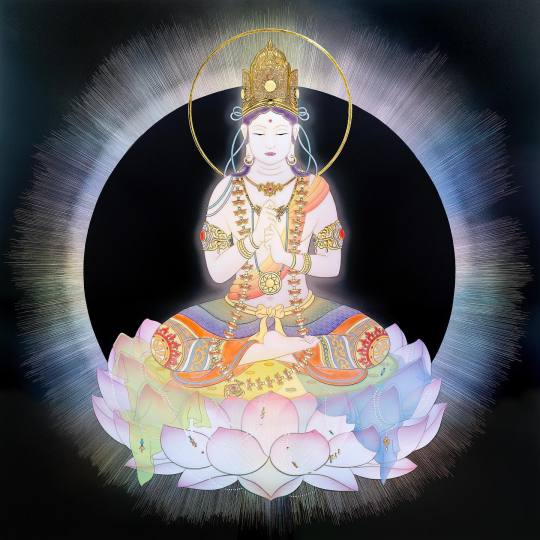
Kazuhisa Kusaba
80 notes
·
View notes
Text
I'm very obsessed with the outsized role of the demonic in medieval Japanese Buddhism and especially esoteric Buddhism (particularly Tendai esotericism). One extremely fascinating aspect of it is the concept of honji, as in honji suijaku, referring to the "true forms" or "true natures" (literally "original ground") of the gods. Especially in that, as Bernard Faure notes, the the honji of a lot of Shinto kami are very often demons or demonic deities, such as Kojin being the honji of Amaterasu.
12 notes
·
View notes
Text
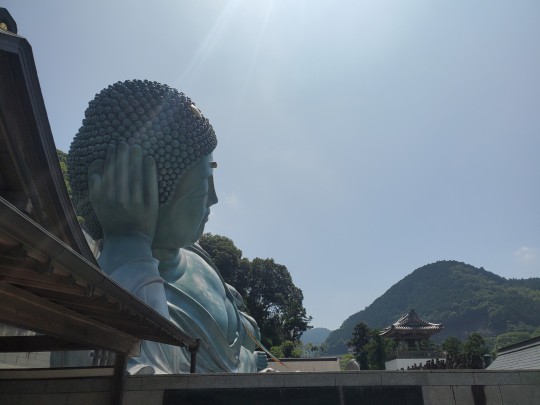

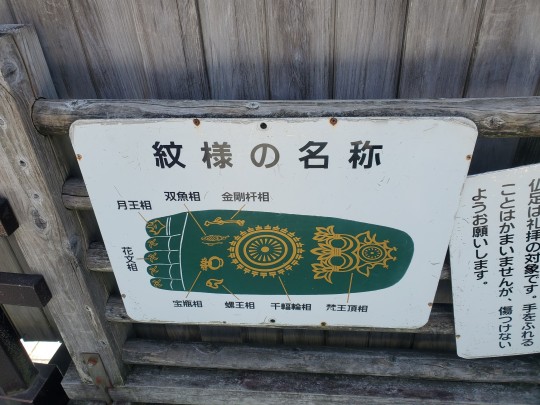
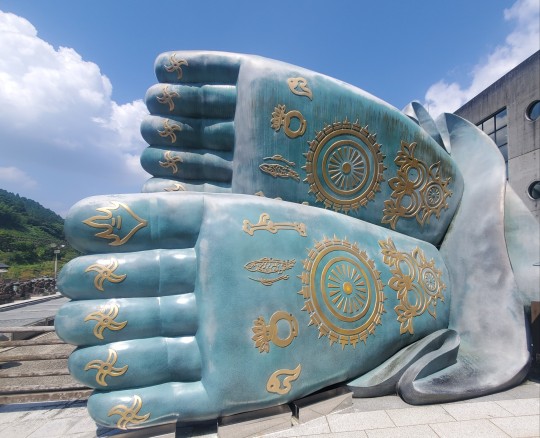
Reclining Buddha at Nanzoin Temple in Sasaguri, Japan
27.07.2023
#abroad#tefl#travel#japan#japanese buddhism#reclining buddha#buddha#nanzoin temple#nanzoin#sasaguri#buddhist temple
7 notes
·
View notes
Text
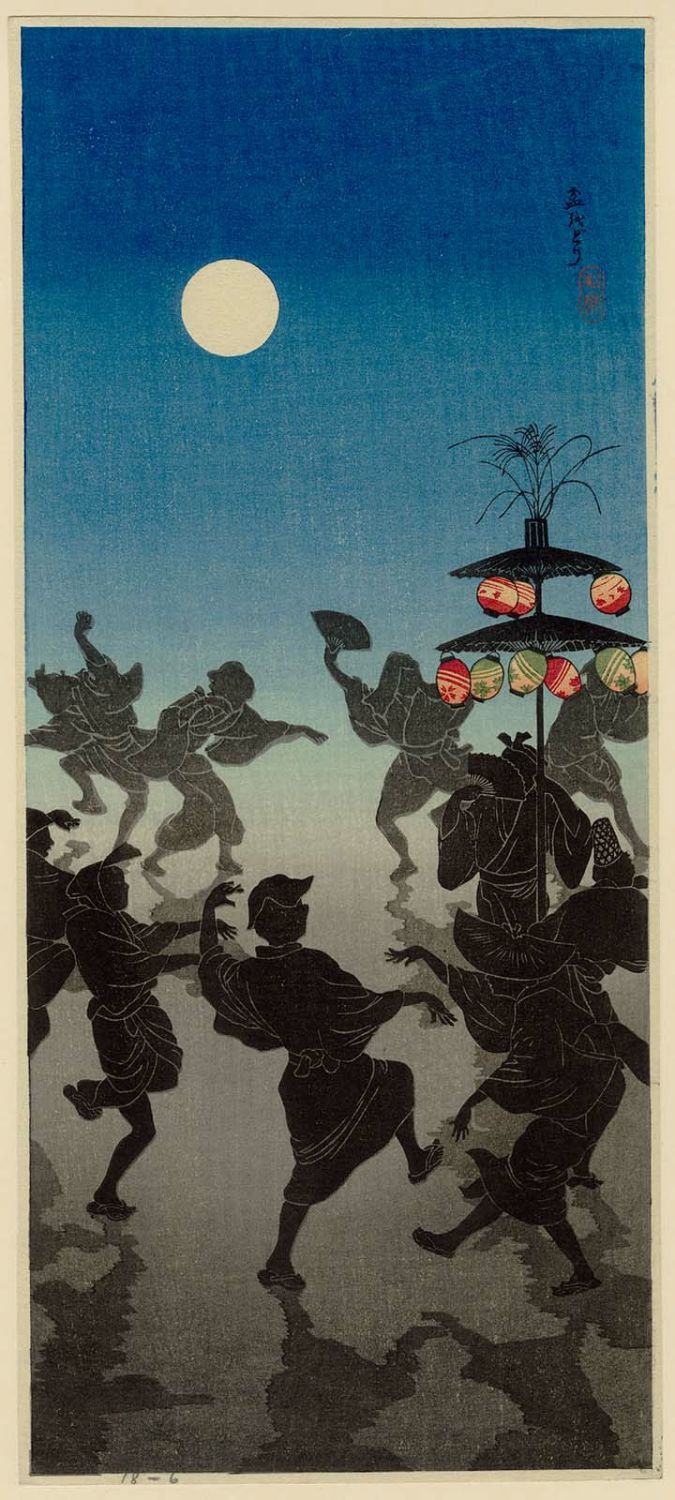
Obon Festival Dance (Bon odori), 1936, Japan, by Takahashi Hiroaki. Source: Museum of Fine Arts Boston
🏮Happy Obon!🏮
Obon (お盆) is a Japanese holiday celebrated from August 13th to 16th. During Obon, we remember and commemorate our ancestors and welcome them back home. On the last day, we say our farewells and send off our ancestors to return to the afterlife.
This art piece by Takahashi Hiroaki depicts Bon Odori (盆踊り), a dance performed to guide and welcome the spirits of ancestors back home.
☆ミ
I know it's already over but I hope you had a great Obon (if you celebrate), and spent valuable time with your ancestors!
23 notes
·
View notes
Text
Zen, the Pure Land, and Buddhism Lite
Warning: long, (mostly) unedited, stream of thought. Sometimes it’s just funner this way. 😄
Since my trip to Japan and back, I’ve been kind of debating something in the back of my head.
Much of my background in Buddhism since as far back as 2005 has been in the Pure Land tradition, especially Japanese “Jodo Shu” and to a lesser-extent “Jodo Shinshu” sects. The sure openness and simplicity are…
View On WordPress
2 notes
·
View notes
Text

Courtesy of @kchasm: Sengoku period warrior and diplomat Buddhist monk Ankokuji Ekei has a Ryu Number of 2.
22 notes
·
View notes
Text
Western variations for Japanese Buddhist traditions....
With Ōhigan came and gone I would like to share an idea for Westerners who practice Japanese Buddhism.
Ōhigan is celebrated by all Japanese Buddhist Schools and is a time to honor and remember our ancestors as well as remember the 6 perfections.
Traditionally bōtamochi and ohagi are made in the spring and autumn of ōhigan. These are mochi sweets made the same way both times of the year just named after different flowers bōtamochi after the bōtan or peony and ohagi after the higanabana.
In the West or at least the Midwest where I live. It is difficult to find the proper rice flour to make mochi. So I began to think I remember my grandmother making tea cakes. Semi-sweet cookies that we would have with iced tea during the summer and hot tea in the winter. A spin on mochi during ōhigan is making tea cakes with a small well in the center filled with a seasonal jam. Strawberry for spring and spiced apples or pumpkin for the autumn. Offer it to the ancestors and Buddha and then partake in the cookies yourself!
Just wanted to share my idea for any other Western Buddha its out there!
6 notes
·
View notes
Text
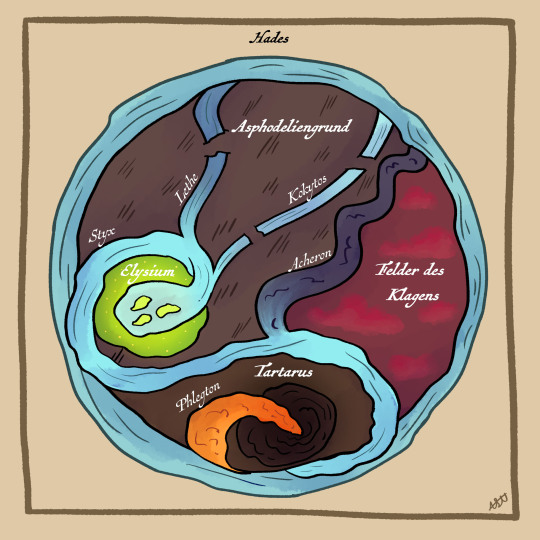


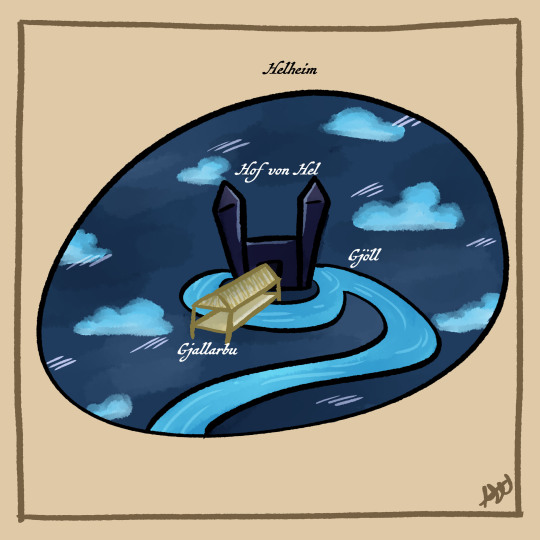
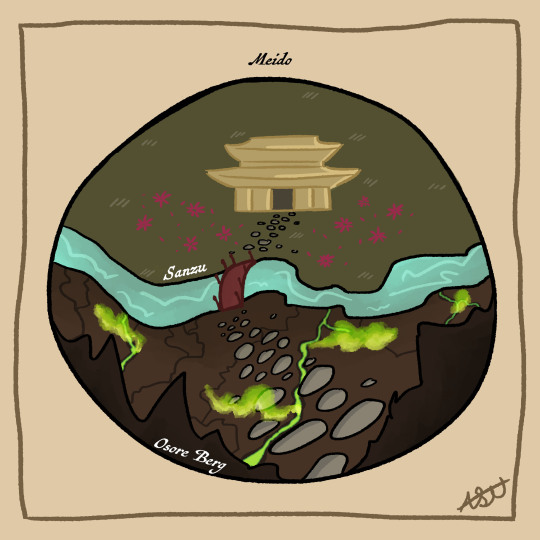
Here are some Maps of the Underworlds from Greek, Nordic and Japanese Buddhistic mythology, that I did for a project with my brother.
Artistic liberties taken.
#maps#greek mythology#hades#nordic mythology#niflheim#muspelheim#helheim#japanese buddhism#meido#art#digital art#my art
3 notes
·
View notes
Text
Zen Buddhism in Japan
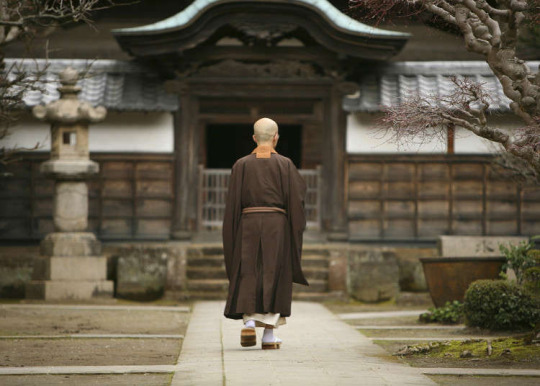
Three Main Schools of Zen
There are three main traditional schools of Zen in Japan, each with its own background and specificities.
The Soto Sect
Soto is the largest of the sects. Historically practiced by the lower classes, artists, and poets, the Soto sect emphasizes the practice of sitting meditation known as zazen. Practitioners face a wall or a curtain during this meditation.
The Rinzai School
Traditionally practiced by the samurai caste, the Rinzai School include the presence of Koan, a kind of short and paradoxical sentence that cannot be solved intellectually. However, those are usually introduced only after good posture and concentration were achieved during the seated meditation.
The Obaku Sect
The smallest of the sects, the Obaku sect was formed by a small group made up of Buddhist masters from China and Japanese students at the Manpuku Temple (Manpuku-ji). To this day, those in the Obaku sect continue to chant sutras in the Chinese language.
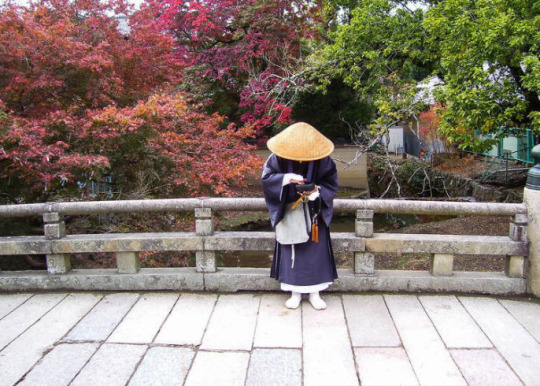
[Source]
70 notes
·
View notes
Text
This is why Japan can't have nice things. A Buddhist temple is bulldozing its toilet because some hikers can't behave themselves.
Read on in my latest for Unseen Japan.
2 notes
·
View notes
Text
Land of the Disappearing Buddha
Land of the Disappearing Buddha
This is an old film about Buddhism in Japan,
https://wp.me/pFy3u-OY
This is an old film about Buddhism in Japan, but well worth watching. The Land of the Disappearing Buddha – Japan. From The Long Search (BBC 1977) series by Ron Eyre.
Buddhist film, about 50 minutes.
For more Buddhist videos click here.
Click here for some more Zen posts.
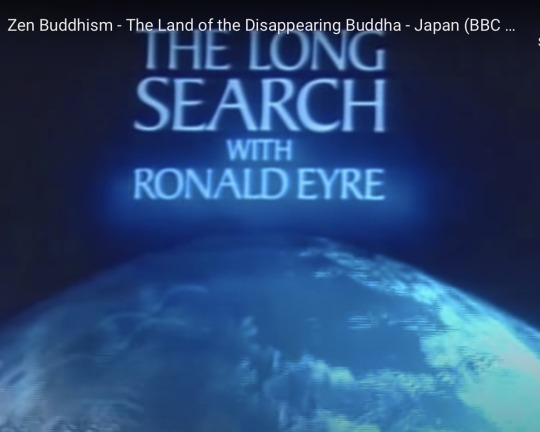
View On WordPress
0 notes
Text

Kazuhisa Kusaba (Japanese, b. 1960), Tsuhime Seor / Princess Seoritsu, 2017, tosaiga, 730 mm × 533 mm.
68 notes
·
View notes
Text
It is only because Susanoo is evil that Amaterasu can be good. It is because of Susanoo's violence that the world can eventually find order.
Bernard Faure, Rage and Ravage (2022), page 157 (here describing succinctly a very fascinating extension of medieval esoteric Buddhist theology into the language of Shinto myth; worthy of any Satanist considerations)
9 notes
·
View notes